
Flatonia
FAYETTE COUNTY, TEXAS

Text from historical marker in downtown Flatonia erected in 1973:
Flatonia
Market town for rich agricultural area, on one of this state's earliest railroads (chartered 1841 by the Republic of Texas). Situated on land granted in 1840s to rancher William A. Faires. Germans began to settle here in 1860s, and soon needed a shipping point for their products. Sailing master Friedrich Wilhelm Flato (1820-1899) and his wife Sophie, of the German Colony, had a store about 2 miles south of here. In the 1870s, Czech immigrants arrived, and the Galveston, Harrisburg & San Antonio Railroad (delayed by Civil War, 1861-65) was built to this point. John Cline, F. W. Flato, John Lattimore, and railroad president T. W. Pierce founded Flatonia on Oct. 16, 1873, naming it for the Flato family. At the same time, adjacent landowners Anton Freytag and James Faires platted Freytag and Faires' additions to the town. Post office opened in 1874. Town was incorporated Nov. 8, 1875. Soon it had churches, a school, cotton gins, a newspaper (The Flatonia "Argus"), a cottonseed oil mill, and other businesses. A casino was built for political gatherings, dances, dramas, and other uses. In 1886, a second railroad, the San Antonio & Aransas Pass, reached here. Throughout its first century, the town has remained industrious, thrifty, and stable.
Flatonia Methodist ChurchN.E. Main St. & N. Middle St., Flatonia Founded about 1855 as Lane's Chapel by Alabaman settlers, including Texas Declaration of Independence signer William Menefee. Group met in log cabin (about 6 miles NE), then erected church school building (1859) at Pine Springs. Flatonia was founded in 1873. Services at Pine Springs lapsed when church burned 1874; members began to move to town. Worship was held in homes until this church was built in 1879. |
|
Flatonia Baptist ChurchSouth Converse & East 6th Street Pioneers organized this church in 1874, before incorporation of Flatonia, and erected a frame building in 1878. That was the town's first church, and it was shared with other faiths. The customs of early years included disciplining unruly members or "unsound" preachers, and holding annual "Protracted", or revival, meetings. Services in their own languages were held for German, Bohemian, and Spanish converts. This church has always supported missions and charities. Present sanctuary, second for the church, was dedicated in 1965. [1976] Photo contributed by Marion and Steve Daughtry |
|
Flatonia City Hospital and Opera House109 W. South Main Street Dr. George Washington Allen (1849-1903) founded the Flatonia City Hospital in 1896, and this building was completed the following year to serve the medical needs of the growing railroad town. About 1910 the second floor hospital space became the site of the City's Opera House. In 1914 this Romanesque revival building was sold to H. E. Olle, who leased it for over 60 years. Businesses located here have included a drugstore, chicken hatchery, skating rink, and cafe. Recorded Texas Historic Landmark - 1983 |
|
Wheeler Building101 West South Main Street This commercial vernacular building was built for W. H. and Emma Wheeler in 1907 by Allen Brothers Construction Company. Built of locally made bricks, the structure exhibits Romanesque revival style influences and features corbelled brickwork, arched paired windows on the second floor, and a recessed corner entry. Tenants of the building have included a dentist, retail stores, a nursing home, and a Boy Scout troop. Recorded Texas Historic Landmark - 1989 Photo contributed by Marion and Steve Daughtry |
|
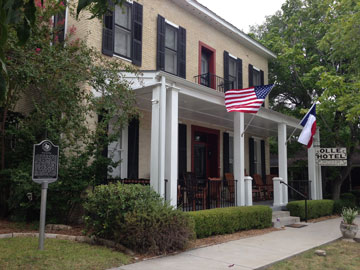 |
Olle Hotel218 South Market Avenue This two-story brick structure was built between 1896 and 1901 by Flatonia physician G. W. Allen, Sr. The first known use of the building as a hotel occurred in 1915, when it was purchased and operated by Carrie Snell. Flatonia's railroads created the need for boarding houses and hotels to lodge the many drummers, or traveling salesmen, who crossed the countryside by rail. In 1926 Otto Olle purchased the hotel, operated by him and later his wife until her death in 1967. The building then sat vacant until 1999. The colonial revival style building featured tall ceilings, double-hung windows and a covered vereanda for ventilation, with a major expansion during the Olle's ownership. Recorded Texas Historic Landmark - 2009 |
Other Flatonia Area Historical Markers |
Flatonia is situated in the southwestern part of the county on the crossing of the Southern Pacific and the San Antonio and Aransas Pass Railway. East and south of it are rich black prairie lands, west and north is postoak. Flatonia is favorably situated, in the best part of the mineral region of Fayette County. In its neighborhood are fine kaolin and clay beds; coal may also be found in the neighborhood of Flatonia. While none of these mineral resources are developed right now, there is a chance of their future development on account of the city being situated at the crossing of two important railroads.
Flatonia stands on a bed of rich black clay. In wet weather the streets are muddy and cause a great deal of inconvenience. There are several substantial brick buildings in Flatonia.
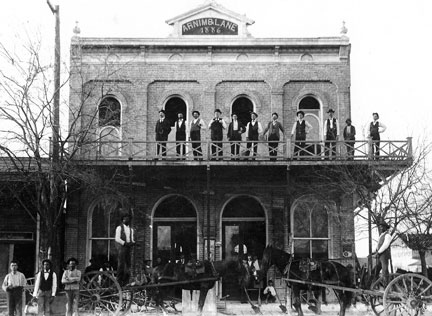 Arnim & Lane, late 1800s, courtesy of E. A. Arnim Archives & Museum. |
The oldest settlers in that part of the county are the Harrisons, Cockrill, Yaeger, Flato, Sloma, Ferris and Menefee families.
The population of and about Flatonia was originally entirely American, but after the Civil War a great many Germans and Bohemians have been attracted by the fertile lands and settled there. Now they form the majority of the population. During the last ten years a great many Greeks, Arabians and Italians have settled in Flatonia and established themselves in business, selling pea-nuts by the pack.
The summit of the flourishing times in Flatonia was reached before the arrival of the San Antonio and Aransas pass. Those were lively times then. Cotton was carried then to Flatonia from as far as Yoakum. At that time the country was a stock country. The cowboys held their rendezvous in Flatonia and very often made times too lively for peaceable citizens. But those times have passed. Since the arrival of the San Antonio and Aransas Pass Railway, Flatonia had an energetic competitor in the thriving town of Moulton. Its trade was cut off from all sides and the disappointment of having lost it which could not be helped, still reflects from the business attitude of its citizens. During the last decade it not only not gained, but even lost in population; according to the census of 1900 nearly two hundred.
Of the business men who treated this writer with kindness and patronized him in spite of the hard times - which kindness for that reason he appreciates the more - he mentions the former mayor of Flatonia, the jovial and popular Stoffers, the proprietor of a first-class saddlery; Mr. Wm. Stein who excels in his line of work in roofing and guttering, and who is prepared to do all kinds of tin work; Wm. Fritsche, the artistic shoe maker, and last but not least, Ernst Olle, who keeps in his popular barroom the purest and best brands of whiskies, liquors, wines, beer and cigars. In connection with this businesses he runs a restaurant.
The city of Flatonia has two able newspapers which have been spoken of under the head of "Newspaper Press of the County." The people are public spirited and take a great interest in county affairs. On all public questions Flatonia is generally heard from. The late crop failures have to some extent depressed the spirit of her citizens, but there is no doubt that Flatonia some of these days will awaken and regain some of her former prosperity.
There are two churches in Flatonia: the Methodist with Rev. W. T. McDonald, and the Baptist with Rev. J. M. Sallee. The people of Flatonia are religious and earnest members of their churches.
The following lodges are represented in Flatonia: Knights of Pythias; Woodmen of the World, J. H. Murphy, C. C., H. R. Thulemeyer, clerk; Woodmen Circle, Miss Maud Murphy, clerk; Knights of Honor; A. O. U. W.; Hermann Sons; R. A. M.; A. F. and A. M., J. F. Mulcahey, W. M., F. P. Yaeger, secretary; Odd Fellows, J. H. White, N. G., W. A. Beckham, secretary; Royal Society of Good Fellows.
The following gentlemen are the city officers: Mayor, J. D. Bunting; Secretary, H. R. Thulemeyer; Treasure, B. A. Kempe; Attorney, Chas. Nesrsta; Marshal, W. O. Goode; Aldermen, J. H. White, F. P. Yaeger, Wm. Stein, R. L. Simmons, Frank Worley, C. Stoffers, Albert Kubiana, and J. A. Cadwell.

|
|
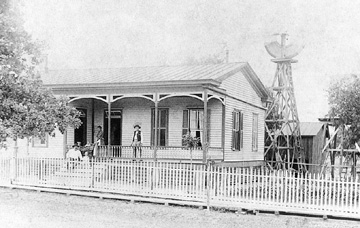 |
|
Home of Gustav & Katherine (Riefkohl) Mehner
|
|
|
The Galveston Daily News, 23 Apr 1876, page 2 FAYETTE COUNTY.. . .—An Improving Town. FLATONIA, TEX., April 20, 1876. . . . IMPROVEMENTS—BUSINESS Our beautiful little two-year-old village of Flatonia is prosperous, and bids fair to rapid developments with age. Building and improvements meet the eye on every hand. The people are becoming a unity in business and social interests, and we are happy to say there is nota more orderly, peaceable and flourishing village on the line of the Galveston, Houston and San Antonio road. |
This station has shipped so far during the season 4023 bales cotton, 150 bales hides, 365 cars, or 7600 head of cattle. Cotton continues to come in slowly, receiving ten bales to-day. Yours truly, C. C. W. |
The Galveston Daily News, 31 May 1877, page 2 FAYETTE COUNTY.The Schulenburg Argus says . . . On last Saturday we visited Flatonia, one of the most flourishing towns on the line of the Galveston, Harrisburg and San Antonio Railway. The town is incorporated, and has an estimated population of 1000 souls. It is situated in the midst of a rich and prosperous portion of our county, near the north line of Lavaca and Gonzales counties, many of whose inhabitants come there to purchase their supplies. Flatonia has about twenty stores, several saloons, two hotels, one livery stable, one bakery—and will soon have another—one millinery establishment, two blacksmith shops, two drug stores, two saddlery shops, one tin and stove establishment, three shoemakers, a Masonic and Odd Fellows' hall and school-house. |
|
Colorado Citizen, 4 Oct 1877, page 2 FLATONIA.—We visited Flatonia last Monday, and found business dull there, as it is every where at this time. The merchants are well supplied with large stocks of merchandise awaiting customers. Cotton was not coming in as freely as we expected to see it. What does come in, finds ready sale at the very highest market prices. Flatonia is a very pretty town, with a population of seven or eight hundred inhabitants, the streets are of good width and regularly laid out. The G., H. & S. A. Railway runs through the center of the town. New plank sidewalks have recently been laid which are quite an improvement to the place and add much to its comforts. |
It is the principal point on the road for shipping stock. This trade has and will continue to add to the prosperity of the place, but not to the extent that it had done heretofore, as the stock business decreases, each succeeding year. There are large quantities of wool and hides shipped at this point. This place is surrounded by a rich and productive country of great extent, much of which is under cultivation, but the greater portion is still used for grazing purposes, embracing as it does some of the finest pasturage lands in the State. |
Especially is this true of the country South and Southwest of the town, which is mostly prairie, interspersed with beautiful groves of timber, affording an abundance of wood for all purposes. We do not know the prices of land in that locality, but presume unimproved can be had as low as five dollars per acre.—Schulenburg Argus. |
|
Weimar Mercury, 1 Dec 1900, page 7 CYCLONE AT FLATONIA.Flatonia, Tex., Nov. 24.—At 12:05 this morning a cyclone struck here from a southwesterly direction, passing through from the southwest corner to the northeast corner of the town, destroying much property. The wind was accompanied by a heavy rain, also much lightning. It seems a miracle that there is no loss of life, as the wind was blowing between sixty and seventy-five miles an hour. The wholesale house of Wallis, Landes & Co. lost its skylight; part of the roof blown off, letting in much rain and causing a considerable amount of stock to be wet. Loss not known, as they are overhauling stock this morning. A great amount of sheds and outhouses of Vanham & Bunting were totally destroyed, being blown out into the street. |
The awning of Mr. A. W. Routh's drug store was found on the opposite side of town. Mr. Liebe's stock was damaged by water, also stock of A. Farris damaged. A large skylight in the saloon of J. H. Schultz was blown off. Awning of the grocery store of Mr. Geo. McGonigle was blown off. Crossing the railroad track the wind tore up the sidewalk and fence at Mr. Cockrill's store. Next door is Mueller Brothers' furniture store, which is a total wreck. All of the furniture on the inside is scattered around the house and badly damaged. An empty building belonging to Mr. Jim Faires was blown about five feet; also a house on the corner, property of Mr. Gresham of San Antonio, was twisted off of its foundation and blown back. |
The residence and bottling works of G. H. Mehner is next in line. His large stable is a total wreck; a large house was turned completely over, destroying much property. The bottling plant was also damaged. Mr. J. W. Mateer suffered a loss in his lumber yard, also lost several building in his yard and his windmill was totally destroyed, being torn out of the ground, making his loss quite heavy. Property belonging to Prof. D. G. Scott, H. W. Harrison, William Sullivan, W. R. Morgan and others was damaged. The wires of the electric light plant are badly damaged, being down in many places, also the wires of the Southwestern telephone and telegraph company are reported in crippled condition. Many trees and shrubs are blown down; also in the outskirts of town many small houses are off their foundations. |
|
Weimar Mercury, 30 Jul 1904, page 1 Flatonia, July 27.— A disastrous fire visited this town about 3 a. m. The large furniture store of Muller Bros. was first discovered to be on fire. The flames rapidly spread to H. Lange's bakery, and then to J. V. Starry's saloon. The three buildings and contents were a total loss. Part of Starry's stock was saved. Muller Bros.' loss $3,000 with $1,000 insurance; H. Lange loss $1,800, with $500 insrance; J. V. Starry loss $1,200, no insurance. |
M. Cockrill's large Mexican tea establishment is only fifty feet west of the burned district and was in immediate danger, but by heroic work of our citizens no damage was done to stock or building. |
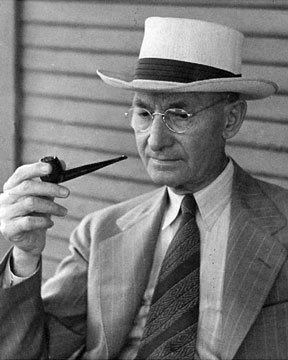 |
|
|
|
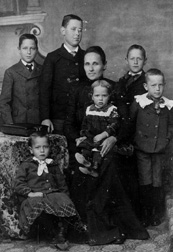 |
|
|
|
 |
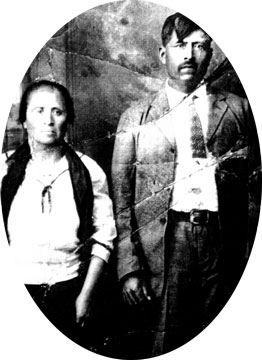 |
Rosas family, ca 1919Juana Velasquez (grandmother of Maria Rosas), Maria Rosas and her husband, Juan Rosas. Daughters are Antonia, Juana and Marcela.Contributed by Rachel Delgado |
Fernanda and Feliciano DelgadoContributed by Rachel Delgado |
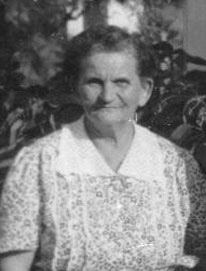 |
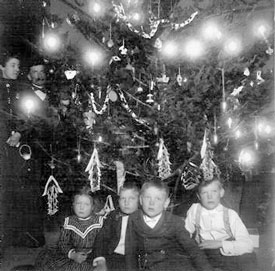 |
Mary Haas Boehm
|
Brunnemann Family on Christmas Day, ca 1900Brunnemann photos contributed by Kathryn Cooper |
Look at unidentified photographs by Flatonia photographer, M. Cadwell.
City Map
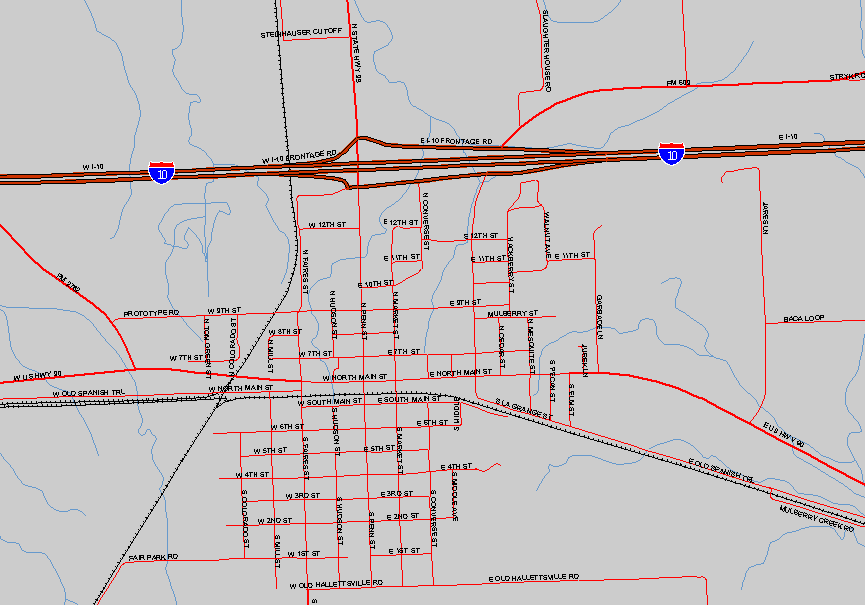
Flatonia Argus
Local newspaper's website
The Czhilispiel Chili Cook-Off (1974)
The many festivities of the 1974 Czhilispiel Chili Cook-off are documented in this unedited footage. Held in the historic Czech and German settlement of Flatonia, the cook-off has featured some of the state's best chili for over thirty years. Couples dance to the live entertainment of the day while judges put their taste buds to the test. Wally Pryor makes an on-camera appearance and the winners are announced at the end of the film. That's chili with a "z"!
June 1887 Flatonia Train Robbery
Lone Star Diary website
Fayette's First Newspaper and Its Offspring
Footprints of Fayette Article
The Flatonia Fair, 1913 - 1936
Footprints of Fayette Article
Fayette County's Precinct Courthouses
Footprints of Fayette Article
Albert Milton Gosch
Biography
Dr. A. M. Kotzebue
Biography
| Cochran Cemetery Mount Olive Black Cemetery Old Flatonia Cemetery |
Flatonia Black Cemetery - Rest Haven Flatonia Catholic Cemetery Flatonia City Cemetery - Oak Hill |
Look at unidentified photographs by Flatonia photographer, M. Cadwell.